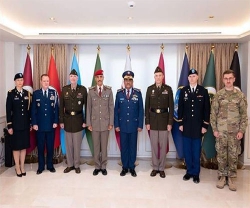During the tests, the system handled a daily number of military air movements several times higher than for any operations conducted up to now, proving its high level of performance and its ability to interconnect NATO and National Air Command and Control (AirC2) units across four European nations into a single integrated AirC2 system.
“This success marks a key milestone in the adoption of the ACCS system by NATO member nations. It will be phased in alongside existing national systems and then replace them progressively, ultimately enabling member nations to plan and conduct air operations together in a full automated manner,” said Enzo Montalti, Director AirC2 Programme Office and Services, at NATO Communications and Information Agency.
“This is the last milestone before full deployment of ACCS in all European NATO nations. Once fully deployed, the system will protect 10 million sq km. of European airspace against a range of threats by coordinating systems in member nations,” said Philippe Duhamel, CEO of ThalesRaytheonSystems.
As NATO operations evolve in the future, ACCS is designed to adapt to new operational challenges, with continued advancements to AirC2 or additional ballistic missile defence capabilities. ACCS will provide the solid command and control foundation needed for future Alliance missions. ACCS is a smart defense system in that it provides all NATO nations with a common basis for training, standard procedures and centralized maintenance, significantly reducing support costs and increasing staffing flexibility.






















